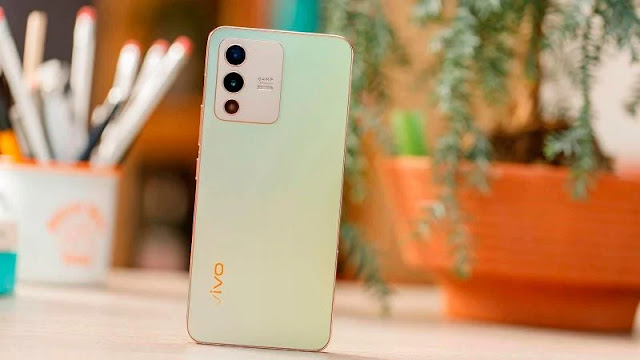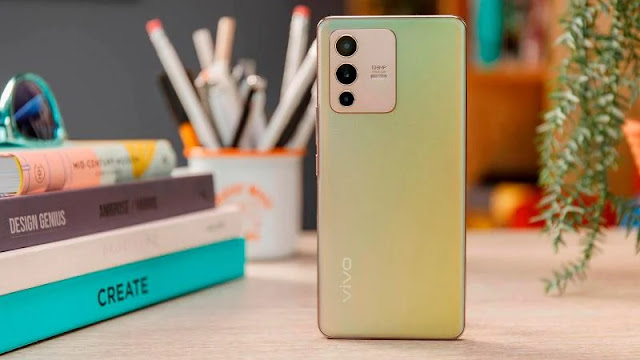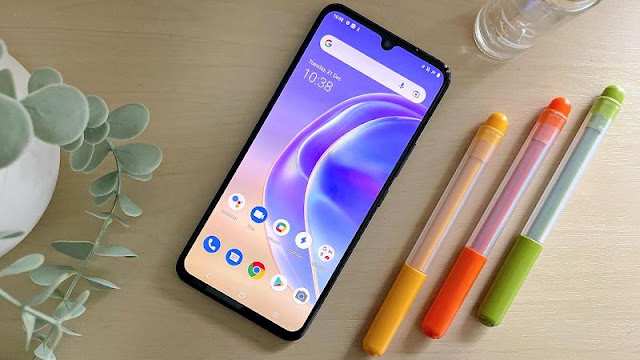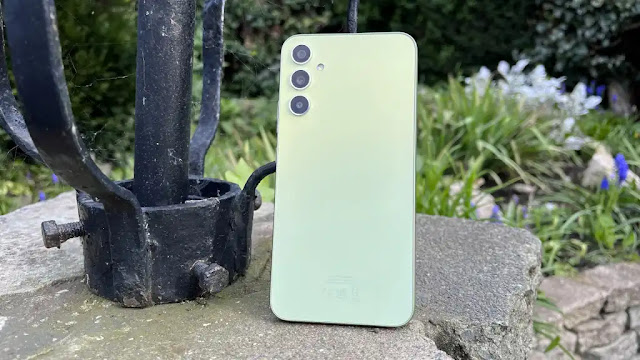The Vivo X50 Pro+ may not have the gimbal gimmick of its little sibling, but it's a better phone in every other respect.
Should I Buy The Vivo X50 Pro+?
Pros
- Stunning design, build & feel
- Powerful camera setup
- 120Hz display
Cons
- Funtouch OS
- China-only
- No wireless charging
Our Verdict
Price When Reviewed
- About $750
The Vivo X50 Pro+ is a funny old phone. It lacks the killer feature that defines the X50 Pro – a built-in gimbal – and instead prioritises a slightly more predictable feature set. That makes the X50 Pro+ a less exciting flagship, but quite possibly a better one.
The big change is using Samsung’s massive GN1 sensor for the main camera, as the X50 Pro+ is the first phone to actually use the new 50Mp image sensor, beating even Samsung to the punch.
Improvements to the processor, storage, display refresh rate, charging speeds, and other camera lenses round out the X50 Pro+, which offers incremental improvements over the X50 Pro in almost every area.
So yeah, there’s no gimbal. But almost everything else about the phone is better despite that.
Design & Build
If almost everything about the phone’s internals is upgraded from the Vivo X50 Pro, you couldn’t tell from looking at it. In fact, from the outside the two phones are nearly identical, but please don’t take that as a complaint – both rank among my favourite phone designs of the year.
Saying that, there’s nothing striking or remarkable about the way the X50 Pro+ looks. The 6.56in display is curved – but not too curved – and interrupted only by a small punch-hole selfie camera. Flip to the back and you’ll find a domino-style camera array on a grey/blue frosted glass finish – unless you opt for the orange faux leather finish, which I haven’t seen in person.
Unless you’re a fan of that vibrant finish I wouldn’t dismiss the standard glass model though. The muted finish somehow feels both striking and restrained (don’t ask me how) and I’m pretty sure that this and the X50 Pro are the best feeling phones of 2020. The weight, the curvature, the precise texture of the frosted glass – everything is just right, in a way that’s impossible to describe until you pick the thing up and realise that Vivo just nailed it.
There’s no waterproof IP rating to speak of, and only mono speakers – though impressively loud and crisp mono audio for a phone, in fairness. Those are really the only downsides to be found here though, as otherwise Vivo has perfected the look and feel of the phone.
Cameras
After praising the design of that big ol’ camera bump, let’s take a look at what’s actually inside it.
The big downside that I’ve already mentioned is that the X50 Pro+ doesn’t feature the novel gimbal stabilisation that features in the X50 Pro. Vivo says that’s to make space for Samsung’s large ISOCELL GN1 image sensor, which is apparently too big to combine with the gimbal tech without making the phone itself unreasonably thick.
How you feel about that tradeoff will be up to you, but there are clear benefits to using a large sensor like the GN1. It’s ‘only’ 50Mp – not like Samsung’s giant 108Mp Ultra cameras – but that’s part of how it can fit in large 1.2μm pixels, which take in more light. That means better low-light performance (a real weakspot for the X50 Pro), better dynamic range, and more detail in every shot.

Let’s look at the results. First off, the main camera is by and large a stunner. Colours are bright and vivid (if a touch over-saturated) with exceptional detail and dynamic range – check out the clouds in the second shot to see what I mean. The white balancing could use a little work, with some shots coming out slightly flat, and others a touch too warm, but other than that this camera delivers the goods in most lighting conditions.
Lowlight performance straight out of the main camera is less impressive, despite that big sensor. With a bit of ambient light around the Pro+ copes, but as soon as it gets too dark, or there are too many competing light sources, it gets thrown off its game.
Luckily this is mostly fixed in an excellent night mode, capable of both picking out otherwise invisible detail in near pitch-black conditions, and of balancing big light sources in otherwise dark settings without blowing everything out. Again, you can see in the two house shots that white balance and colour temperature can be variable, but this is easily fixed, and the clarity is fantastic.
Vivo has followed recent ultra-flagship trends by throwing in not one, but two telephoto lenses. First up is a 32Mp, f/2.1 lens at 2x zoom, which is used both for zoomed in shots and the phone’s portrait lens. It’s better at the former than the latter – edge detection on the portrait mode is a little ropey, and you’ll have to be smarter than me and remember to turn off Vivo’s aggressive beautification modes, enabled by default.
A second 13Mp lens kicks in at 5x zoom, and enabled hybrid digital zoom up to 60x. Results at that distance are mostly messy – though it caught the clock tower well in one of my sample shots – but the 2x and 5x settings are both among the best you can buy. Detail and colour accuracy are preserved immaculately, and even the 13Mp 5x lens will product shots that look better than those out of some phones’ main lenses.
Flip to the front, and you find a single selfie camera at 32Mp, f/2.5. This is a capable and detailed lens – it won’t rock your world, but there’s very little to fault in its performance either. It also supports portrait mode, but only theoretically – every portrait selfie I took displayed a bokeh effect in the viewfinder, but not in the final shot. It’s only a bug of course, but a few months after launch I’d expect it to have been ironed out by now.
Display
If the camera is a qualified success without that gimbal feature, then the display is certainly easier to appreciate.
The 6.56in AMOLED supports has a 120Hz refresh rate, together with HDR10+ support and an impressive pixel density of 398ppi.
Those are the specs, but what does it mean in practice? The display is bright, with crisp, vivid colour reproduction and the amazing viewing angles you’d expect from a good OLED panel.
There are slim bezels on all sides, together with a slight curvature to the display. It’s enough to keep the phone comfortable to hold and help it look the part, but not so curved that it begins to affect usability. Basically, it’s in the sweet spot.
Specs & performance
The X50 Pro+ is primarily powered by the Snapdragon 865 - the fastest chip around before the slightly upgraded 865+ launched recently. Paired with either 8GB or 12GB RAM, the result is one of the fastest phones on the market, and the 865 delivers 5G support too.
My review sample – the faster 12GB model – breezed through all of our benchmarks, comfortably outpacing the X50 Pro (which uses the slightly slower Snapdragon 765). I never noticed any lag in day-to-day usage, and with these specs the X50 Pro+ will also be a very capable gaming phone if you’re that way inclined.
You get to pick between 128GB or 256GB storage, which should be plenty – though note that there’s no expandable storage option, so what you get is what you’re stuck with.
Battery & Charging
On battery the X50 Pro+ is very strong, though not quite best-in-class. The 4350mAh battery lasted just over nine hours on our internal benchmark, and in usage it comfortably made it through the day with juice to spare. It’s not quite a two-day phone, but with battery saver it’ll probably stretch that far if you really need it to.
There’s no wireless charging, but 44W wired charging is fairly nippy. A 30-minute charge netted me 62% of battery – realistically enough for a full day’s usage – and a full charge should take around an hour. There are faster charging phones around, but it’s definitely a case of diminishing returns – this is almost certainly fast enough for most.
Software
Software is really the main drawback to the X50 Pro+, for two reasons: Vivo’s Funtouch OS, and the fact that you’ll likely have to import a Chinese handset, which brings its own irritations.
Funtouch OS used to be disastrous, but its Android 10 incarnation is clearly moving in the right direction. Vivo has stripped the OS back a little, bringing it closer to the stock Android experience, cleaning up the settings menu, and improving its English translations to make everything easier to get your head around.
There’s also a wealth of customisation options, from app drawer layouts to icon styles, the always-on display, and more. There are plenty of ways to make this phone your own.
Still, the built-in virtual assistant Jovi is hard to fully escape, and its integration into the global search is especially dreary, constantly throwing up irrelevant app suggestions. Worse still is the sheer volume of bloatware, with apps from Vivo and various third-party companies installed by default, and many of them impossible to uninstall.
This is made worse by the fact that, assuming you’re a Western reader, you’ll be importing a Chinese handset if you want to get this phone. That means much of the bloatware, and Jovi’s search suggestions, will be in Mandarin, and you’ll be stuck with a lot of it no matter what.
Chinese units also won’t come with Google services pre-installed, so you’ll have to sideload the Google Play Store to get to your normal apps. This is only a 10-minute process, and is simple enough – and once it’s done, the phone will run all your apps, and updates, just as normal. Just be aware that setup will be a little more complicated than you might be used to.
Price & Availability
None of Vivo’s X50 range has launched in the UK. While the X50 Pro is coming to some European markets, and thus has a global version, the X50 Pro+ is strictly China-only.
Even with shipping that’s a fairly competitive price for the specs you’re getting. It undercuts obvious rivals like the OnePlus 8 Pro or Samsung Galaxy S20 and Note 20 series. The closest rival on price is likely the coincidentally named Realme X50 Pro, which starts from £569. Vivo definitely trumps the Realme on camera and design chops, but the latter has the advantage of being directly available in the UK.
Verdict
The X50 Pro+ delivers one of the strongest camera setups you’ll find outside of an iPhone or a Huawei device. The new Samsung sensor is put to good use, with fantastic photos in both daylight and using night mode, while the telephoto setup is also top-tier. Only the ultrawide disappoints at all, but only because it’s merely good rather than excellent.
Throw in impeccable specs and perhaps my favourite design and finish all year – all at a competitive price – and the Vivo X50 Pro+ should be easy to recommend. It’s really only the software side that lets it down, worsened by the fact that most of us would have to import the phone from China to ever get our hands on one.
But if you’re willing to put in that effort, the X50 Pro+ really is one of the best phones of the year, gimbal or no gimbal.
Specs
- Android 10
- 6.5in FHD+ (1080x2376) AMOLED, 120Hz, HDR10+
- Qualcomm Snapdragon 865 octa-core processor
- 8/12GB RAM
- 128/256GB internal storage
- 50Mp f/1.9 main camera (OIS)
- 13Mp f/2.2 ultrawide
- 32Mp f/2.1 2x optical zoom
- 13Mp f/3.0 5x optical periscope
- 32Mp f/2.5 selfie camera
- Fingerprint scanner (in-screen)
- 11ac dual-band Wi-Fi
- Bluetooth 5.1
- GPS
- NFC
- 5G
- Single/Dual-nano SIM
- USB-C
- Mono speaker
- 4315mAh non-removable battery
- 44W fast charging
- 159 x 73 x 8.8mm
- 192g






































0 comments:
Post a Comment